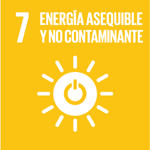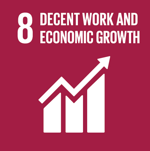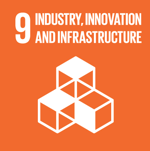Tropical Agriculture 4.0: efficient water management
 Colombia
Colombia
 Ecuador
Ecuador
 Honduras
Honduras
Executive Summary
Agricultural water use is usually called “inefficient”. Farmers irrigate without technical principles, thereby incurring deficiencies impacting crop health and final yield. In addition, this often results in overuse of the water resource. This scenario and the current climate change effects lead producers and entities responsible for managing water resources to focus efforts on improving water use and management. Thus, for those entities responsible for generating technical solutions, challenges include the correct dosage and frequency of irrigation, as well as taking care of the water sources. This proposal ""Tropical" Agriculture 4.0: efficient management of water resources" derived from the results of the project "New technologies to increase the efficiency of water use in agriculture in LAC by 2030", aims to deliver to the farmers of four crops (avocado, cocoa, Tahiti lime and papaya), in three countries (Colombia, Ecuador and Honduras), an adjusted irrigation program for the production needs of each crop. Productive age plots have been selected for this purpose. For Colombia, the research will be carried out on the four indicated crops. In Ecuador, the cacao crop has been selected. In Honduras, cacao, Tahiti lime and papaya. A monitoring network with sensors will be installed at each plot to measure soil moisture and climatic variables. The information will be transmitted to a central server using Internet of Things (IoT) techniques. Specific correlations will be identified by site, in the soil-water-plant-atmosphere system. The analysis will generate an irrigation program for each crop: volume, frequency, and period. The program which depends on the moisture content of the soil (water balance method), will be delivered in real time by a Web application. The application will be accessible to the community (producers, academics, technicians from the agricultural sector, scientists and entities related to technology transfer). Downloading steps, application uses, network operation, assembly, disassembly, maintenance, expansion, and data management will be socialized (trained) with the community. Furthermore, a training program will be developed, which includes both face-to-face events at the experimental site and virtual ones. This program will support the assimilation of concepts and direct management of equipment.
The result of this project is to achieve the objective of increasing water use by applying Agriculture 4.0 technologies in tropical crops of commercial and social significance.
The technological solution
Technical recommendation for irrigation management in three scenarios: 1.Standard program for producers who cannot access digital technologies, applicable in the area where the technology was developed; 2. Recommendation for producers not connected to the IoT network, who operate the application manually and can use it under any conditions where soil moisture monitoring is available; Producers connected to the IoT network, who receive irrigation recommendations directly from the Web application. Identification of the technology's value proposition: Producers will optimize the use of resources, resulting in economic, environmental, and social benefits. Entry into digital agriculture will enhance their competitiveness.
Results
The project aims to speed up the adoption of digital practices in small and medium-sized agribusinesses, promoting precision farming to enhance productivity and optimize water usage. Recognizing existing technological gaps, the project starts by introducing advanced technologies to farms. This outcome will be achieved by meeting the specific goals of the project: The initial goal is to "develop precision irrigation technologies for four fruit species in the Valle del Cauca region, Colombia." This involves validating irrigation recommendations for avocado, cocoa, Tahiti lime, and papaya, which can then be shared with the community. Additionally, we'll use data from monitoring the first and second cycles of the Colombia pilot to create a user-friendly web application. This application will enable direct irrigation control using information from the climate and soil moisture monitoring IoT network, leading to more efficient irrigation practices. Moving on to the second goal, which is to "generate a diagnosis of current water use and an irrigation program for cocoa cultivation in Ecuador and cocoa, Tahiti lime, and papaya in Honduras," we aim to provide these countries' communities with an initial approach to managing irrigation for prioritized crops. The diagnosis will allow for a comparison between the current state of water use and the benefits achieved through technological advancements. The third specific goal is to "implement a technology transfer program for the prioritized species in Colombia, Ecuador, and Honduras." This involves training individuals involved in the value chain of the prioritized species. Direct training will be provided to a total of 2,040 beneficiaries across the three countries, through 24 face-to-face events and 21 virtual events. Furthermore, in line with the training objective, the experimental facilities will be accessible to the wider community during unscheduled times for those interested in learning, exploring, or participating in the project.
Beneficiaries
Regarding the direct beneficiaries, the following are considered: 2,040 people trained in the transfer program; 445 producers with technical recommendations for efficient water use in 4 crops in the northern region of Valle del Cauca, Colombia; 600 producers with technical recommendations for efficient water use in cocoa cultivation in the province of Manabí, Ecuador; and 802 producers with technical recommendations for efficient water use in 3 crops in Zamorano, Honduras, for a total of 3,887 beneficiaries. Indirect beneficiaries are considered to be the community related to the crops but outside the project areas, quantified at approximately 3,000 beneficiaries. Finally, the potential beneficiaries are estimated at 325,500 for Colombia and 189,000 for Ecuador.
Sustainable Development Goals







Participating Organizations
Executor
- Corporación Colombiana de Investigación Agropecuaria (AGROSAVIA) - Colombia
Co-executor
- Universidad Zamorano (ZAMORANO) - Honduras
- Universidad Técnica de Manabí (UTM) - Ecuador
Associated
- Asociación de usuarios del distrito de riego RUT (ASORUT) - Colombia
- VISUALITI (VISUALITI) - Colombia
Graphics and data
Financing by country (in USD)
















